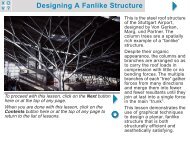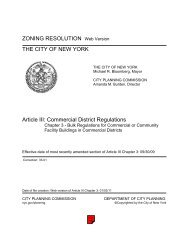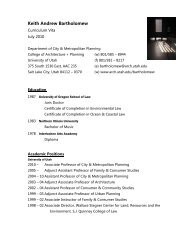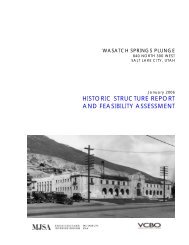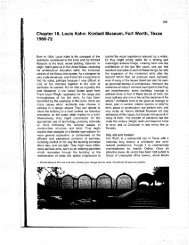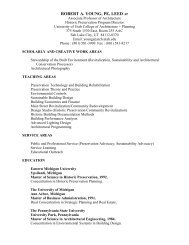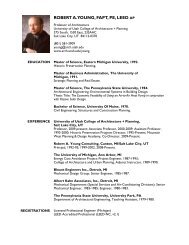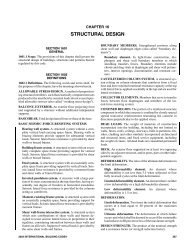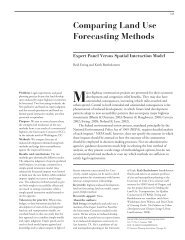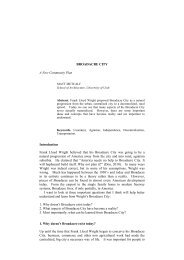The Josephine Baker House: For Loos's Pleasure Farčs el-Dahdah ...
The Josephine Baker House: For Loos's Pleasure Farčs el-Dahdah ...
The Josephine Baker House: For Loos's Pleasure Farčs el-Dahdah ...
You also want an ePaper? Increase the reach of your titles
YUMPU automatically turns print PDFs into web optimized ePapers that Google loves.
1. Le Corbusier, Standing Woman<br />
(<strong>Josephine</strong> <strong>Baker</strong>), 1929<br />
Far& <strong>el</strong>-<strong>Dahdah</strong> teaches in the School<br />
of Architecture, Rice University.<br />
<strong>The</strong> wire-frame mod<strong>el</strong> for the <strong>Josephine</strong><br />
<strong>Baker</strong> <strong>House</strong> was created by Stephen<br />
Atkinson in Computer Vision on a Sun<br />
Workstation. <strong>The</strong> computer image were<br />
rendered using a Silicon Graphics<br />
Workstation.<br />
Atkinson teaches at the Boston<br />
Architectural Center and is a designer<br />
with Machado & Silvetti Associates.<br />
Assemblage 26 72-87 0 1995 by the<br />
Massachusetts Institute of Technolog).<br />
Fares <strong>el</strong>-<strong>Dahdah</strong><br />
<strong>The</strong> <strong>Josephine</strong> <strong>Baker</strong><br />
<strong>House</strong>: <strong>For</strong> <strong>Loos's</strong><br />
<strong>Pleasure</strong><br />
<strong>The</strong> narrative history of an architecture complicit with a<br />
subject's affects has yet to be written. Examples are rare<br />
when, in an architectural treatise, love is a semantic notion<br />
and not its function, as in Claude-Nicolas Ledoux's Projet<br />
d'une maison de plaisirs. An amorous architecture may, in<br />
fact, find a theoretical point of departure somewhere in the<br />
fifteenth century when love becomes an obsessive feature<br />
for Alberti - an obsession, we are told, later realized in<br />
Francesco Colonna's Hypnerotomachia Poliphili.' Colonna's<br />
treatise takes the form of a love story in which buildings be-<br />
come metaphors for the protagonist's lover. It is an originary<br />
moment, perhaps, when a building is described as both an<br />
object of desire and as a quasi-subject who might actually<br />
enjoy being loved.] In the Age of Enlightenment, one also<br />
finds instances when love meets architecture, when laws of<br />
seduction are ratified in architectural theory - in fictions on<br />
buildings and in built form. Planimetric distribution, for<br />
example, becomes with Nicolas le Camus de Mkzikres a<br />
distribution of pleasures when a particular building type,<br />
such as an hbt<strong>el</strong> particulier, is organized r<strong>el</strong>ative to a series of<br />
tableaux, each meant to provoke a particular sensation in the<br />
room's occupant. Indeed, de Mkzi6res writes on what until<br />
then had been given little attention: "affections of the soul."3<br />
Irr<strong>el</strong>evant of origins, examples can certainly be collected for a<br />
history of an architectural patronage in which sentiment and<br />
affects are part of the program. It is a history that might begin<br />
with a seventeenth-century folie and consist of a long list of<br />
architectural commissions for the Duc de Rich<strong>el</strong>ieu, Ma-<br />
dame de Pompadour, La Guimard, William Beckford,



